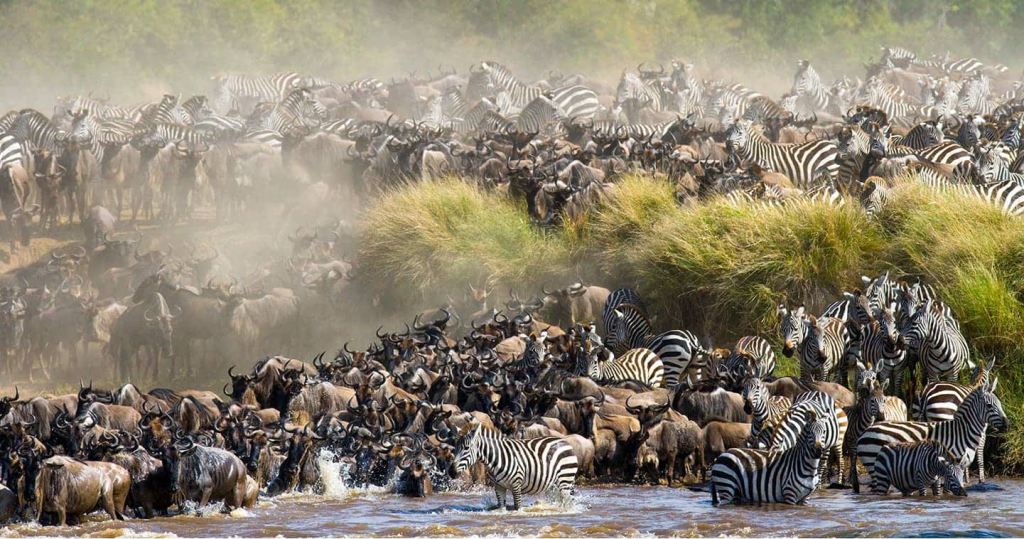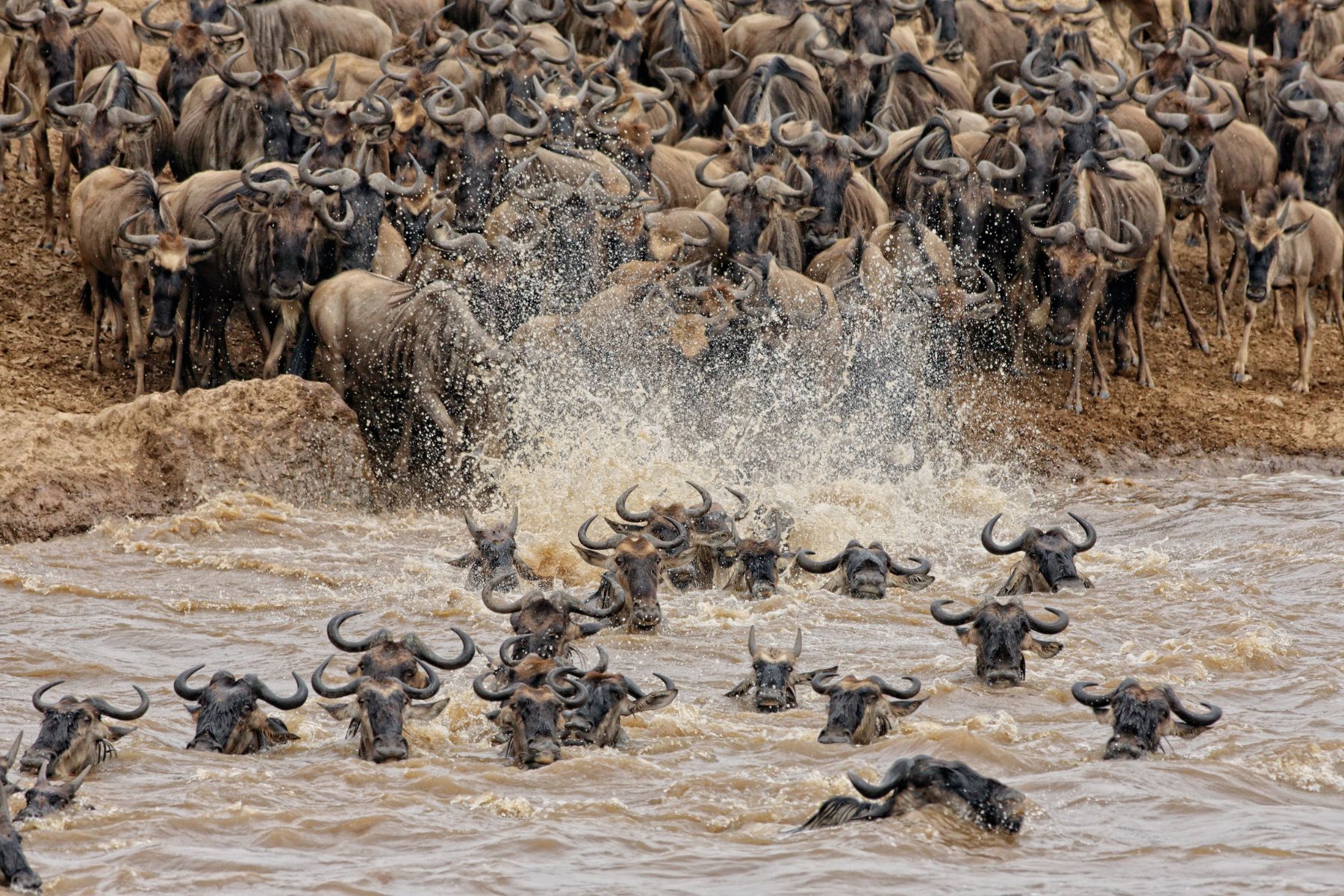In this article, we will discuss some of the fascinating Wildebeest Migration Facts that can only be found in East Africa, Kenya, and Tanzania. Wildebeests are an intriguing species of the African wilderness, and they are even more fascinating when observed closely.
Wildebeests migrate from January to January, traversing the greater savannah wilderness, crossing infested rivers, and battling the territories’ great predators.
Between January and March, when the calving season occurs, and June to October, when they fight for their lives crossing the major Mara river and its tributaries in both Masai Mara National Reserve and Serengeti National Park, is the best time to witness this beautiful phenomenon.

Facts about the Wildebeest Migration
Today’s topic will be Wildebeest Migration Facts. They are distinct and fascinating wildlife species that play an important role in Africa’s wilderness and ecosystems.
The following are some Wildebeest Migration Interesting Facts: –
Every year, approximately 1.5 million wildebeest, 350,000 Thomson’s gazelle, 200,000 zebra, and thousands of eland and other ungulates (hoofed animals) take part in what has been described as “the greatest show on Earth,” The Great Wildebeest Migration.
Every year, between January and March, half a million wildebeest calves are born in the Southern Serengeti at the start of the yearly migration cycle. The majority are born in mid-February, when approximately 8,000 wildebeest are born every day for approximately three weeks. They can walk as soon as they are born, allowing them to keep up with the herds!
More than 150,000 wildebeest and 20,000 zebras are killed by predators and crocodiles while crossing the Mara River and its tributaries during the migration.
Lions, cheetahs, hyenas, vultures, and other predators usually follow the herd for food.
The major episodes or intense activities occur from January to March, during the wildebeest calving season, and from June to October, when they cross the Mara River, jump off the cliffs, and participate in major hunts.
Wildebeest, zebras, and other antelopes migrate in groups. The herds provide security and food for one another.
In a full cycle, the wildebeest travels more than 800 kilometers. It is believed that the migration begins during the calving season, when the calves are born, and thus begins in January or February.
Do you require additional information? Contact Us Right Away to Begin Planning.
We have fantastic and professional safari experts on hand to assist you in designing and curating a once-in-a-lifetime masai mara safari experience.

